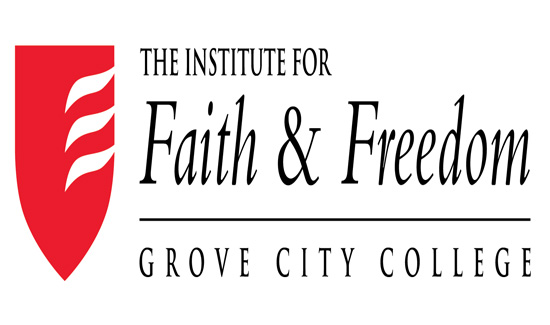Alco Tax Hike: A Regional Perspective
(January 4, 2012)–Setting aside all the madness surrounding the reassessment process that began with the mailing of new values to property owners in Pittsburgh and Mt. Oliver, it is important to recall that Allegheny County Council voted to increase the County millage rate from 4.69 mills to 5.69 mills effective for 2012. One member stated "the draconian cuts in the state budget" were the cause for the 21 percent millage increase.
Whether the big jump in the tax rate will hold up to possible challenges under the provisions of Act 71 remains to be seen. Still, there is little doubt the County’s property tax will be raised in 2012 and will end the long stretch of no County real estate tax increases that many officials have been quick to tout and take credit for. Many of those same officials were more than ready to put Allegheny County’s tax record up against those of neighboring counties.
In a 2009 Policy Brief (Volume 9, Number 73) we examined the record of property tax increases in the five county area (Allegheny, Beaver, Butler, Washington, and Westmoreland). Revisiting those counties in light of Allegheny’s millage rate hike shows that only Washington County boosted its millage since 2009. In terms of the magnitude of increase, Westmoreland’s 2005 hike still is the highest. Butler County changed its predetermined ratio and cut its millage in 2009. Conversations with officials in the four counties adjacent to Allegheny indicate that millage rates will remain unchanged in 2012. That’s important to note because all counties provide health and human services with money provided by the Commonwealth, yet only Allegheny County increased its taxes citing the state budget cuts as the reason.
Assessment Years and Tax Increases in Southwestern Pennsylvania’s Counties
County Year of Last Reassessment Year Most Recent Property Tax Increase Became Effective Percentage Increase in Millage
Allegheny 2012 2012 21
Beaver 1982 2008 19
Butler 1969 2008 9
Washington 1985 2010 16
Westmoreland 1972 2005 23
State Equalization Board, Comprehensive Annual Financial Reports/Audits for Each county
With various years of assessment, predetermined ratios, homestead exclusions, and the impact of school and municipal taxes it can be difficult to make clear county-to-county comparisons of tax burdens. We did undertake a comparison based on per capita burden and collections per dollar of personal income in 2007 (Policy Brief Volume 7, Number 42) that showed a wide variation in collections regardless of year of assessment (i.e. counties with very old base years that had high tax collections on income and those with newer assessments that had low per capita burdens). It was pointed out in that Brief that the collections were based on countywide averages and could not account for individual cases where the assessed value was too high or two low relative to market value.
Based on audited 2010 property tax collections, Census population, and total personal income for 2009 from the Bureau of Economic Analysis, Allegheny County collected $217 per capita and 0.47 cents per dollar of personal income from property taxes. That placed it third out of the five counties on per capita collections and fourth lowest of five on per dollar of income collections. Note that Allegheny County was using 2002 assessments in 2010.
Beaver County topped the lists of both per capita and per dollar of income. According to data from the State Equalization Board (STEB), Beaver County last reassessed property in 1982. Washington County, which is currently in Commonwealth Court fighting a court ordered reassessment and last valued properties in 1985, had the lowest per capita and per dollar collections. It was lower than both Butler and Westmoreland, counties that have older reassessments than Washington.
County Property Tax Collections
County 2010 Population 2009 Personal Income 2010 Property Tax Collection Property Tax Per Capita Property Tax per Dollar of Personal Income (cents)
Allegheny 1,223,348 $56,571,564,000 $264,893,858 $217 0.47
Beaver 170,539 $6,097,550,000 $46,192,256 $271 0.76
Butler 183,682 $7,515,554,000 $39,315,897 $214 0.52
Washington 207,810 $8,439,986,000 $37,628,898 $181 0.45
Westmoreland 365,169 $14,347,819,000 $79,876,076 $219 0.56
2010 Population from U.S. Census Bureau, State and County Quick Facts; 2009 Personal Income from Bureau of Economic Analysis Regional Data; 2010 Property Tax Collections from each county’s audit in table titled "Statement of Revenues, Expenditures, and Changes in Fund Balance"
Meanwhile, Allegheny County–with its 2002 assessments–had per capita collections within 1.5 percent of Westmoreland and Butler Counties despite the fact that Allegheny’s 2002 assessment was decades newer than those counties. Its collections per dollar of income were close to Washington, and slightly below Butler and Westmoreland, none of which have had a reassessment for two decades or more.
The Council approved 1 mill increase in Allegheny County can be expected to bring in an additional $56 million (based on 2010 collections). Assuming for purposes of estimation that population and income hold steady, per capita taxes would rise from $217 to $263 and the collections per dollar of income from 0.47 to 0.56 cents. If state law prevails and the County cannot find a judge willing to allow the County more than a five percent windfall, Allegheny County tax collections per capita would rise to around $227 and per dollar of income would climb to 0.49 cents.
The larger point here is that the nearly decade long argument by County officials that reassessments cause taxes to rise has never been a reasonable argument. Demand for tax revenue is driven by spending. Higher taxes will be required if growth in new taxable property does not occur in a base year environment where assessments are frozen. The problem in Allegheny County is not assessments or even County taxes (to this point).
The big problem is that school taxes are so high compared to schools in other counties. The base year imposed on Allegheny County did not prevent Allegheny school districts from raising taxes over the last nine years–far from it. Some have raised taxes several times. Holding spending down holds taxes down. Even Butler County, with its 42 year old base year and its rapid growth compared to Allegheny County, has had to raise taxes or change its predetermined ratio to generate more revenue as expenditures have grown over time. Accurate assessments are about ensuring fairness. If and when enough property owners in any county feel their assessment system has moved far away from fair, they can sue. The Supreme Court has already established with its ruling on Allegheny County the criteria for winning such a suit.
Eric Montarti, Senior Policy Analyst
Jake Haulk, Ph.D., President
If you wish to support our efforts please consider becoming a donor to the Allegheny Institute.The Allegheny Institute is a 501(c)(3) non-profit organization and all contributions are tax deductible.Please mail your contribution to:
The Allegheny Institute
305 Mt. Lebanon Boulevard
Suite 208
Pittsburgh, PA15234





